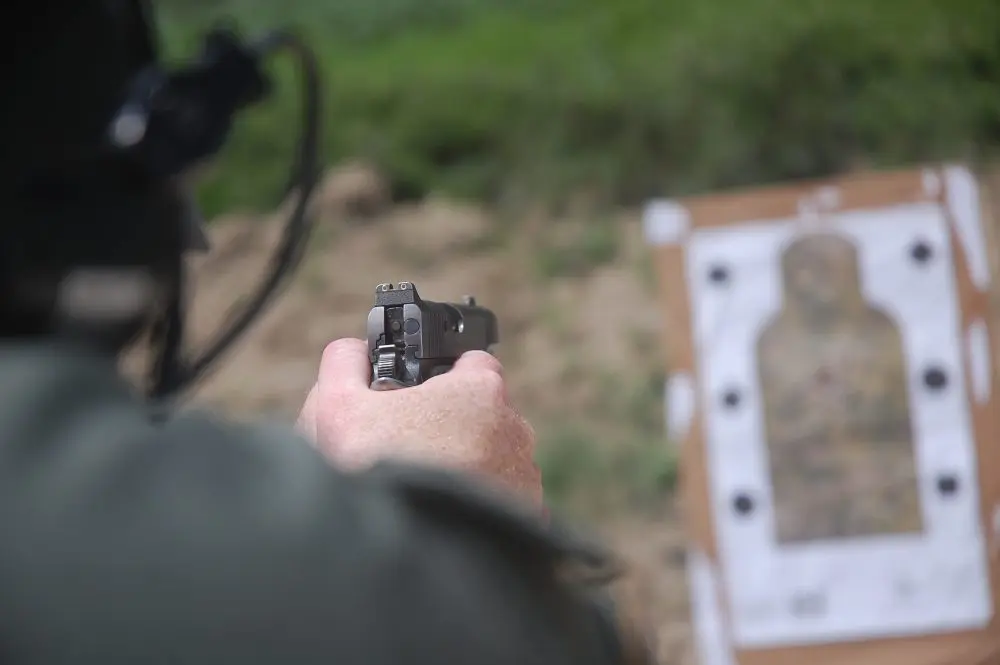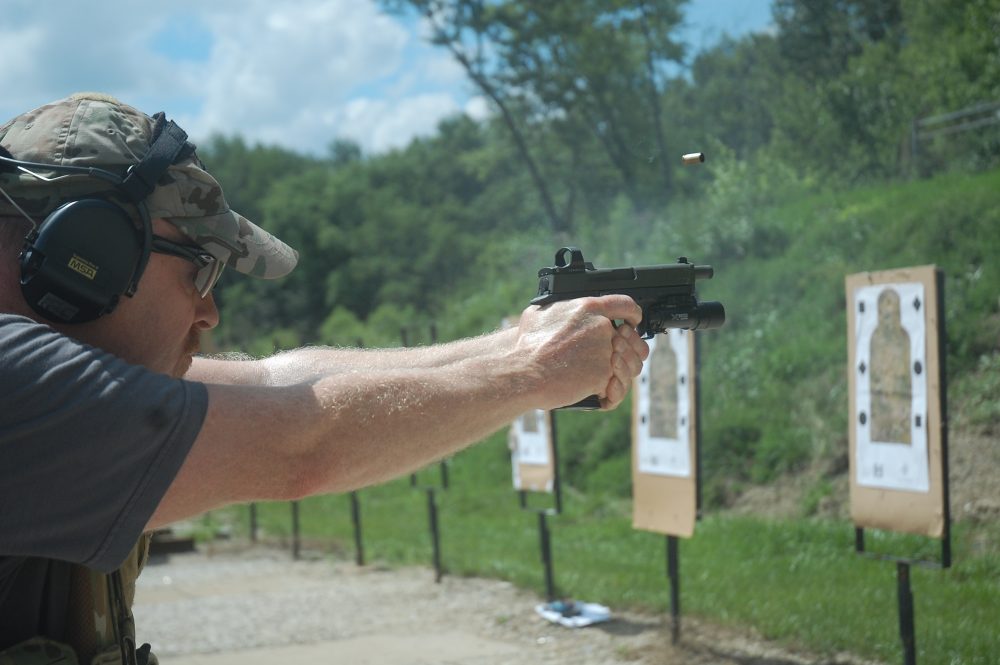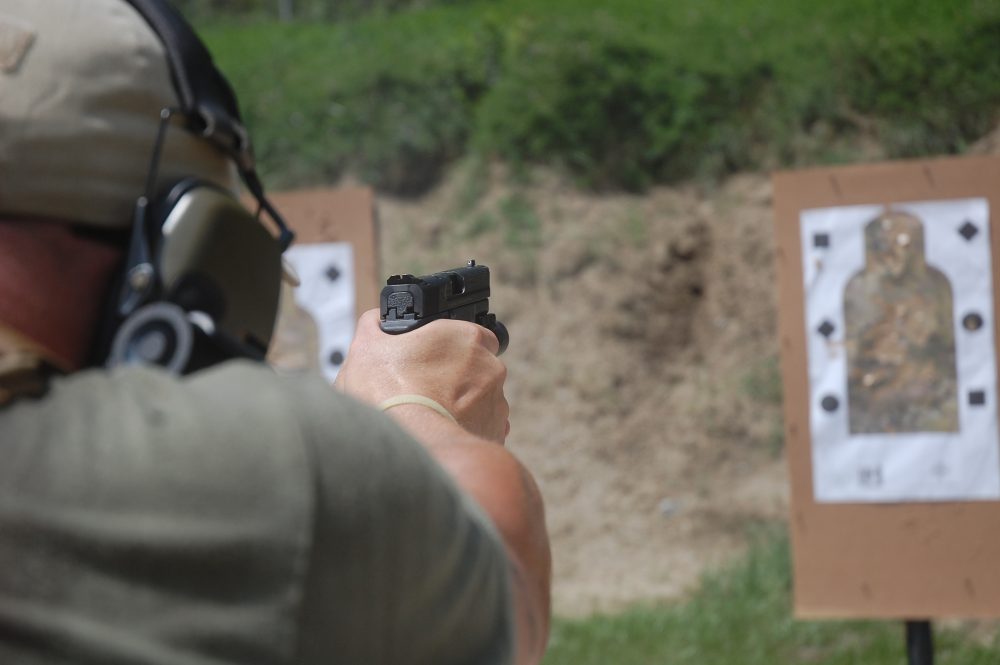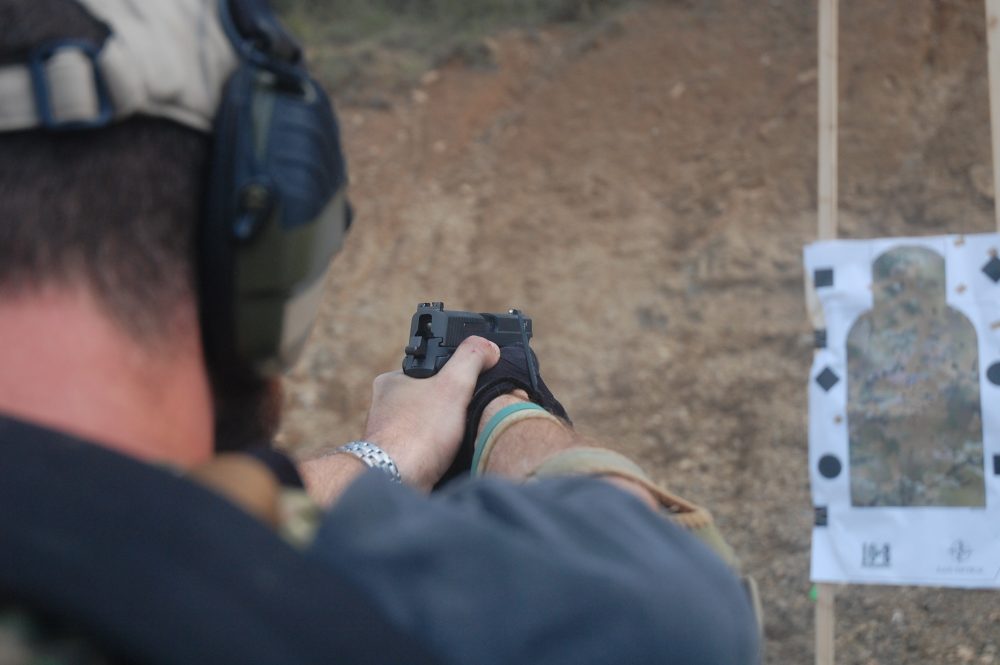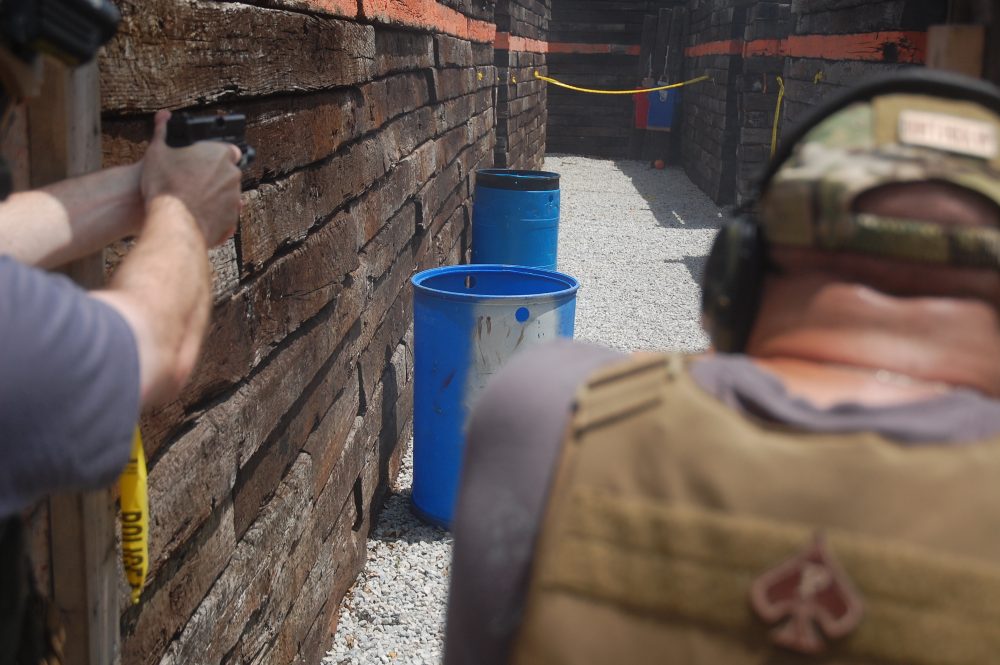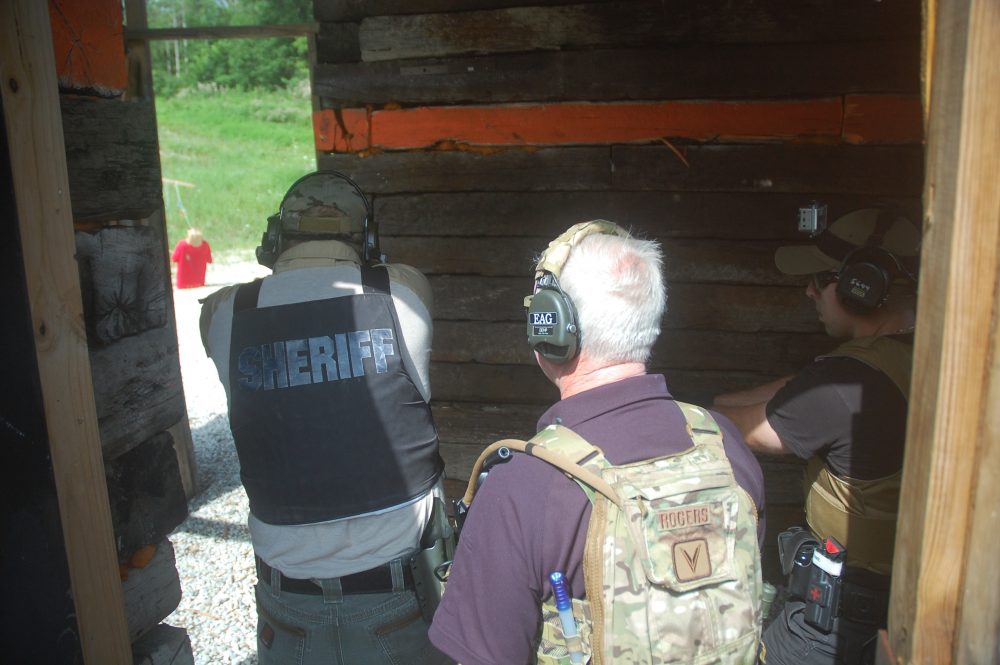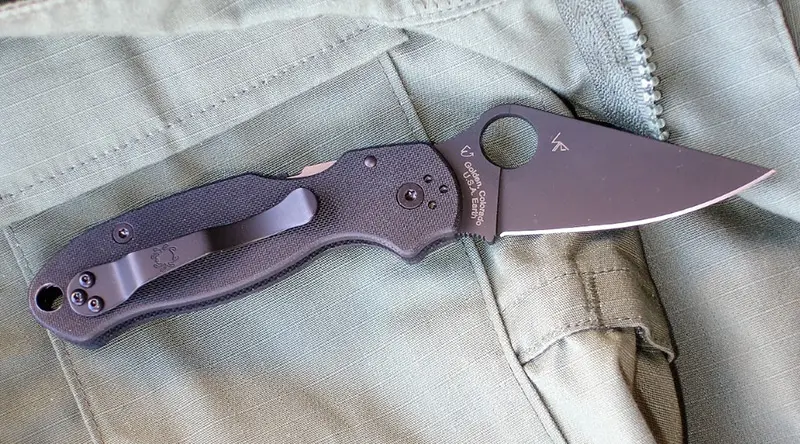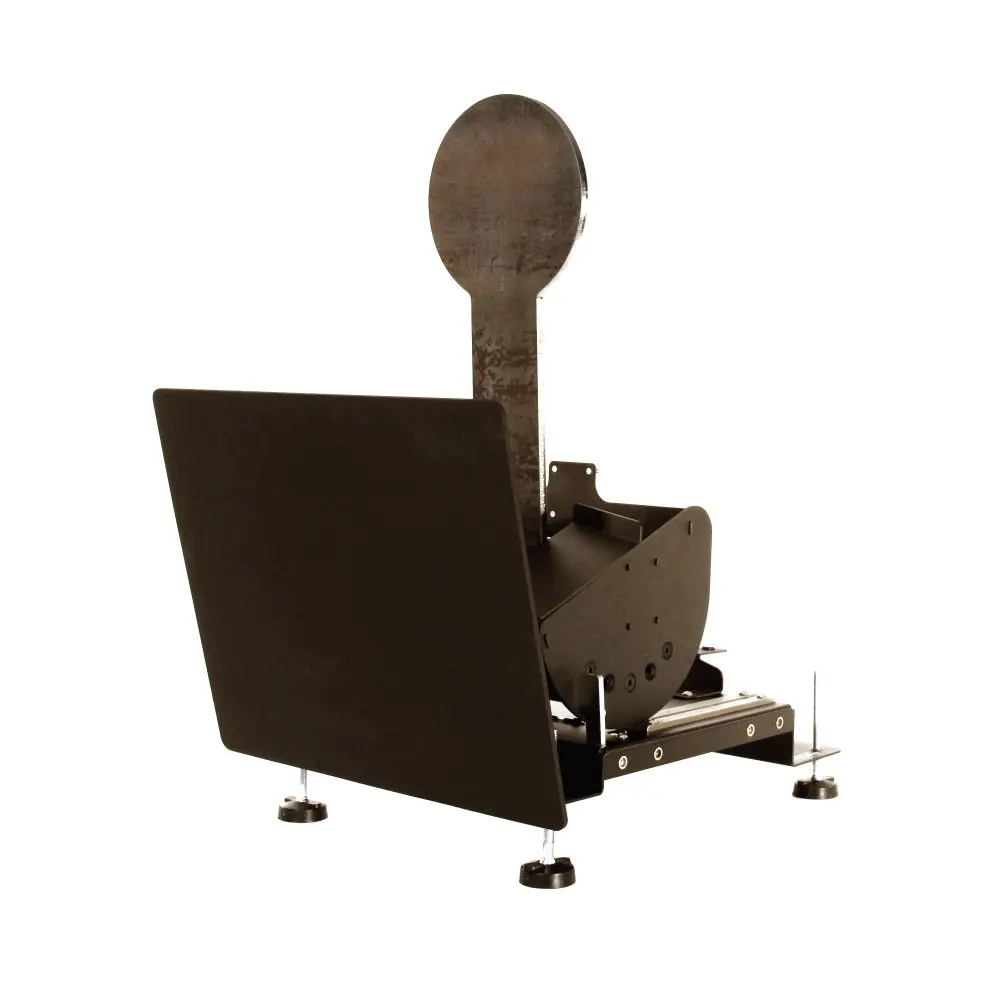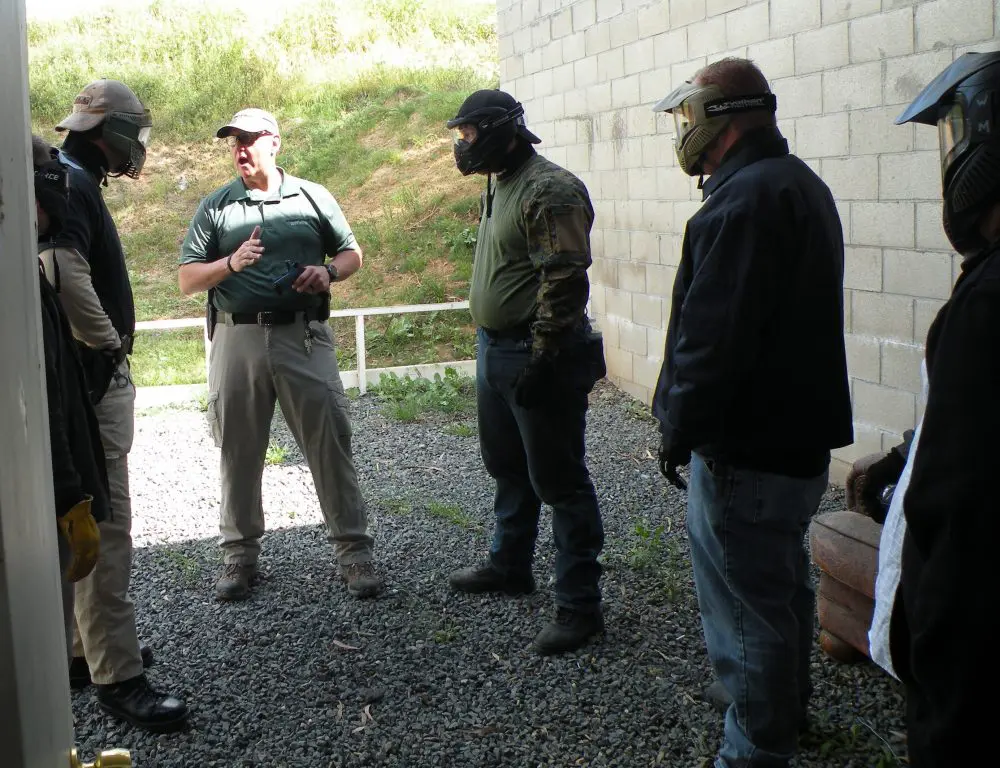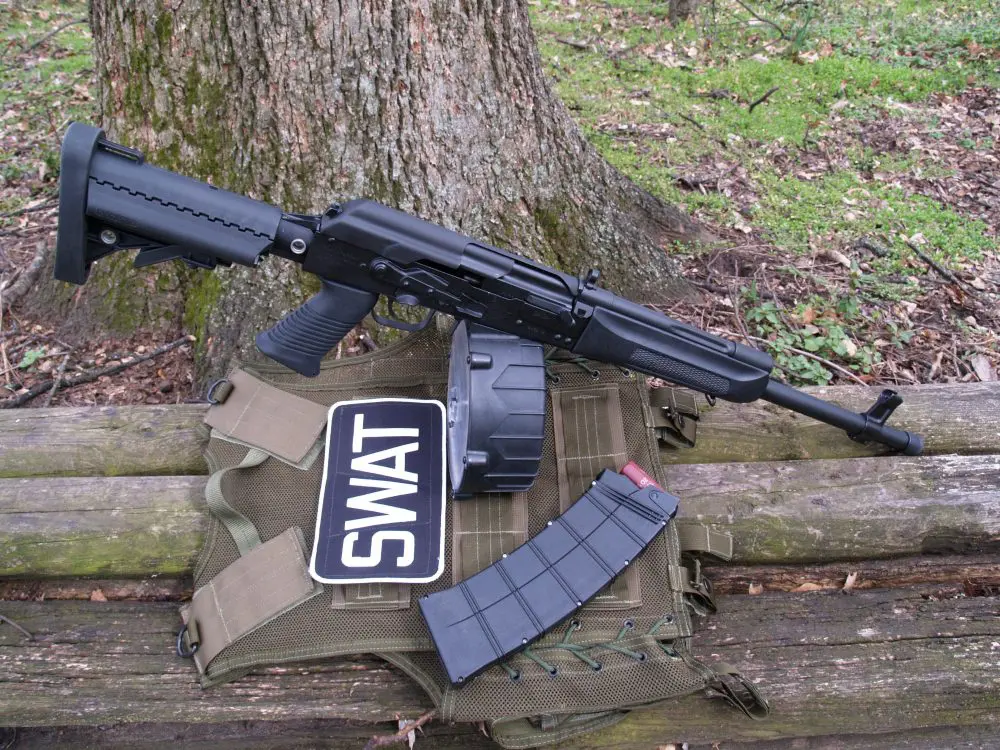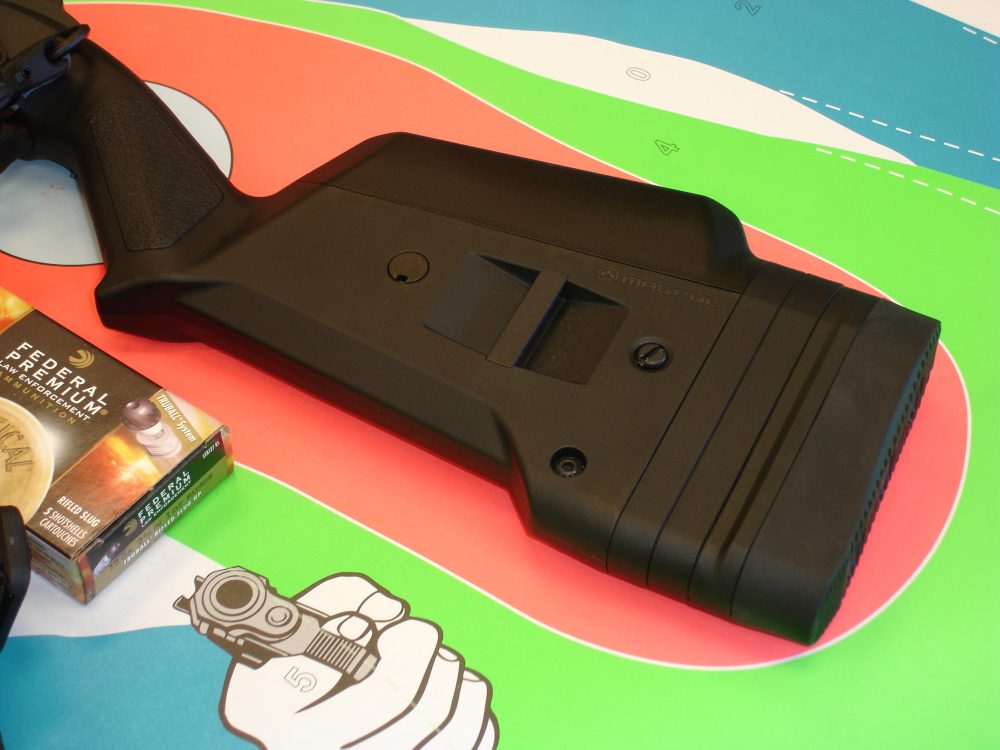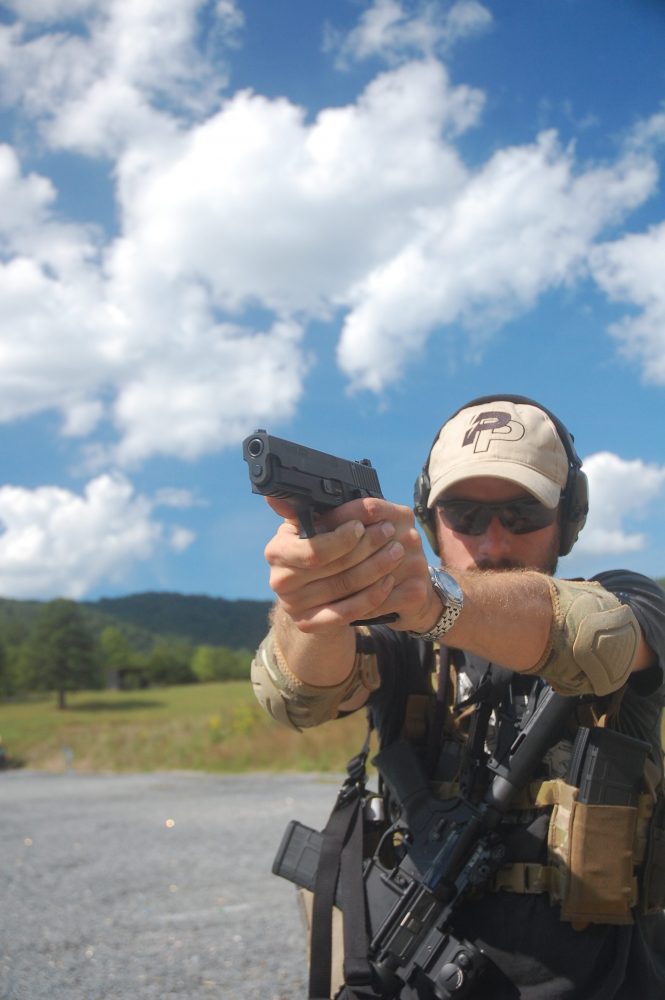
It’s a given that the average pistol engagement takes place at close range. And there are many who base their decision on the distances to conduct their training at by referring to that average.
It is a poor decision.
While the number of civilians who actually fire their gun at another human being is open to interpretation—and bias from one side or another—the bottom line is that it is a relatively small number. And no one really knows because there is no central database for civilian shootings, so while many spout numbers, they are probably no more than sophisticated guesses. Because of this, many will go to various police databases for the information they relate, for obvious reasons. And since cops generally have close-range engagements, there are some who postulate that all training should take place at very close distance.
There is no doubt that training should have a reason, and it should reflect the reality of the street. And if the average police shooting takes place at seven yards and in, shouldn’t all training do so too?
The answer is: If you as a private citizen or a cop gets in a shooting incident, you have busted the average.
What does this mean? That we shouldn’t train? Not at all. What it means is that we need to properly train, and that includes training not only for the “average” encounter, but rather for the realistic potential.
Table of Contents
FROM THE “CAN YOU BELIEVE IT” DEPT
A long time ago, I was asked to audit training for a large armored car firm. These couriers have a tough job and are paid peanuts. Additionally, the pistol licenses they possess are for working hours only, and they were limited at that time to ten rounds in a magazine (now it’s seven rounds).
Their “instructor” was a guy from the rag trade who once owned a gun store. His program of instruction included such nonsense as leaning against the partition in the indoor range, passing the pistol to your support hand and inserting the magazine with your dominant hand, as well as some other idiocy. He also stated in class that it was illegal (his word) to shoot at another past seven yards, and that transcended defensive shooting.
Gunfighting follows the law of inverse proportions. At three yards, minimal precision is needed, but speed is critical.
When auditing a class, I generally keep my mouth shut and submit a written report, but this time I was obliged to violate this.
Me: What is the authority for this statement?
Him: (Cue befuddled look) What do you mean?
Me: Under what statute is this defined?
Him: What?
Me: Is it under the NYS Penal Law? The Criminal Procedure Law? The Underwear Code? Where is this written?
Him: Everyone knows this! (This is a fallback for poor instructors.)
What made this worse is the fact that their average Cash in Transit Armored Car was 22.33 feet long, meaning that a courier at the front of the vehicle could not (under the “instructor’s” reasoning) engage a perp at the rear door—which is the way into the money.
Madness, absolute madness…
At seven yards, you’re at the far limit of the “average” engagement distance. Speed and accuracy are both required.
REVOLVERS
We cannot predict the time and place at which we may need to use Deadly Physical Force (DPF). And as many cops and legally armed civilians tell me, they carry only when they feel it is necessary. More madness.
If you have the ability to legally carry the gun and don’t, you deserve what you get. You cannot predict the distance at which you may have to engage, nor how many bad guys you may face. The bad guy has a vote in the proceedings, and you will likely be behind the power curve from the start.
Back in the day, most Americans, including almost 100% of cops and most civilians, carried revolvers. The revolver was bulky, and since it’s made of steel, heavy. Revolvers were bulky, heavy, and slow to reload, which was an issue considering they had a capacity of only five or six rounds. This is why smart coppers carried two revolvers, and how the New York (Chicago, et al) reload was born.
Revolvers were originally double-action/single-action (DA/SA). In DA mode, the trigger press cocked the hammer and rotated the cylinder. The inertia of that rotation, along with the clockwork inside the sideplate, made for a long but smooth trigger pull. Making accurate shots with a revolver was (relatively) easy.
If greater precision were required, you could thumb cock the hammer, resulting in a very short, light trigger press. In their nervousness, some cops would cock the hammer unnecessarily. And as they most often did not have to shoot, they were left with a hammer back, and though they were taught how to reduce this, some had what I describe as Loaded Gun Brain Fade Syndrome.
So while some were able to correctly lower the hammer, others resorted to new and interesting ways to have a negligent discharge. It is alleged that one NYPD cop figured that if the Ballistics Lab shot bullets into a water tank, he could too, discharging his revolver into his toilet bowl—and became a legend. The net result of such tomfoolery was the birth of the DA-only revolver. In the hands of good shooters, full-sized revolvers were capable of hitting at distance.
John Spears takes brain shot at three yards. You need a bunch of accuracy to get a shot into the enemy’s computer, but it has to be completed in a compressed time frame.
SEMI-AUTOS
While the SA semi-auto (as exemplified by the M1911) had a very good trigger, it was generally shunned by cops who were afraid of two things: the fact that the hammer was always cocked (a no-no from revolver days) and that everyone “knew” it was a horribly inaccurate and difficult-to-control gun. In reality, it was an inherently accurate weapon in the hands of those who embraced it.
The SA/DA semi-auto as we know it today had its origins in the Walther P-38. Like all SA/DA pistols, it was touted as being “safer,” because the first shot required a longer and heavier trigger pull. In the minds of administrators, it would be impossible to negligently fire the gun. This is not only nonsense, but also strange, as people have been negligently discharging SA/DA revolvers from the very beginning.
The SA/DA pistol was very popular with police administrators because they believed it was somehow “safer.” The SA/DA semi-auto pistol was an evolutionary step on the dumbing-down path.
STRIKER-FIRED HANDGUNS
The striker-fired gun, initiated by the Perfect Pistol and now made by others, has a trigger that is consistent. This type of trigger is generally consistent to the individual gun, but not to all the guns of the same maker. And while the stock trigger on Glocks and M&Ps can be worked on by the likes of Ben Simonsen and Doug Holloway (among others), who change the feel of that trigger to an extent I never thought possible, it will never equal a 1911 trigger.
But the 1911 Guru of All Time, the late Lt. Col. Jeff Cooper, said that while the Glock trigger is scratchy and heavy with a lot of creep, it would probably do for its intended purpose.
(As an aside, it cracks me up when people tell me how great their Glock trigger is when compared to whatever. The problem is, the greater majority of pistol shooters have never fired a gun with an excellent trigger.)
BACK TO THAT DISTANCE SHOT
What does all of this have to do with training at distance? As a weapon, pistols are poor performers, primarily due to the fact that any viable anti-personnel cartridges pistols are chambered for are inefficient.
This is followed closely by the fact that pistols are very hard to shoot. The pistol generally weighs more than the press of the trigger required to function it. Couple that with iron sights that are relatively close together, producing a short sight radius.
The two constants in shooting any handheld weapon are sight picture and trigger control. Any deviation from excellent trigger control and good sight picture result in a shot going someplace other than where you want it. This can be considered less than optimal.
While hitting paper is easy at close range, it is not easy to hit a person at this distance. Sharpening your skills at distance will enhance your ability to hit at any range. If an instructor spends all his—and your—time at seven yards and in, he is preventing you from maximizing your potential.
Shooting in general operates under the law of inverse proportions. The closer we are to the target, the less precise we need to be to get an acceptable hit. However, we have to be fast. As the distance increases, the opposite is true. You need to be more precise, but you will usually have more time to accomplish it. As a wise man once said, anybody can get lucky up close. At distance is where your training pays off.
This is why I spend so much time talking about triggers in class. The technique you use to press the trigger straight to the rear counts for an awful lot in the final tally. And we, as a country, regardless of occupation, vocation, MOS, job title, religion or sexual preference, flat suck when it comes to shooting—especially once we get past seven yards.
But wait a minute! Most gunfights take place at seven yards or less! Why should we waste valuable training time shooting at statistically uncommon distances? The answer is simple. Training only up close makes for sloppy technique. You can have a very poor sight picture up close and still get a reasonable hit. Most can even have a moderately poor trigger press and still be semi-good to go.
WHY CAN’T ANYONE GET A HIT AT DISTANCE?
At five yards, we’re all snipers. But once the range increases, we (collectively) start to fall flat on our faces. I see this in every class. We used to consider 25 yards easily within the realm of the average pistol shooter, but within the past 12 years, we’ve found that many have great difficulty getting good hits at 15 yards.
Why is this? There are probably multiple reasons, ranging from less competent people to quotas, affirmative action, and leave no kid behind—no matter how stupid s/he may be. Or it may be equipment. Double-action and striker-fired pistols may in fact have serviceable triggers, but there is a generation plus out there that have never actually fired a gun with a good trigger.
Legions of shooters have told me that an M&P, Glock, HD or whatever has a terrible trigger reset, but when I ask them to define it, they can’t. And if I ask them why a trigger reset is important, they parrot what they’ve heard rather than what they know. There’s a time and place for deliberately resetting the trigger, for example shooting a slow-fire string at 25 yards. But if you’re going to guns with somebody at bad breath distance, that deliberate reset will only slow you down.
Two-man team prepares to enter Alliance, Ohio PD Shoot House. Down that hallway 25 yards, a bad guy (red shirt) is partially hidden by an unknown target (blue shirt). Only the perp’s head is visible. Could you make this shot? Do you train only at one-third of this distance?
But the real reason most can’t get consistent hits at 15 yards and beyond is probably the lowering of standards across the board. The common solution of the executives to people who fail to meet standards is to lower the standards.
Coming around to the real reason we should be spending more time training to meet the standard is this: If you understand how to get sight alignment and sight picture and how to control the trigger straight to the rear without disturbing the sight picture and can do it on demand, you can hit at any distance.
At close range you can be very sloppy and still qualify on the very generous targets, but any errors up close will be magnified at distance. Many get lulled into a false sense of security because they believe that any confrontation will be against a single perp at close distance. But do people ever get involved in hospitals? Schools? Factories? Big box stores? All of these venues have long aisles, hallways and corridors, and while no one is expecting you to make a 100-yard pistol shot under these circumstances, 25 to 30 yards is within the realm of reality.
DISTANCE TRAINING, STEP BY STEP
I’ll draw an analogy here.
Another wise man stated that the only way to train for a ruck hump was to do a ruck hump. Being in excellent physical shape and having stamina in spades are necessary—but the only way you can get used to carrying that ruck is to wear a ruck. Likewise, to be able to shoot at distance means you need a good grasp of the basics, but you also need to train at distance, and we will broadly define this as beyond 15 yards.
But doing your initial training at distance is a sure way to become discouraged. Initial training should be started close, maybe five at five yards. I strongly believe you are responsible for every shot you fire, and to that end wish I had weeks instead of days to teach a class. I would prefer to start and spend a lot of time shooting bullseye targets. However, I do not teach basic pistol classes. I expect everyone to be able to keep all their shots within an eight-inch circle.
This 20-yard shot is from a hallway to a perp outside. Re-evaluate your training and practice if all you’re doing is shooting seven yards and in.
One very good drill to enhance sight picture and trigger control is Dave Blinder’s Dot Torture Drill. It is done at close range with small, unforgiving dots. Once we have accomplished proficiency there, we start working on a plethora of additional skill sets, to include reloading, moving, and multiple target engagements.
Once there is noticeable competence up close, start increasing the range, from ten yards to 15 yards, then 25 yards. This is pretty easy for me to do as an instructor, but if you are shooting solo, consider this. We all have a strong tendency to practice only what we do best, and seldom practice what we really need to.
In order to improve, we have to strive to overcome things that are difficult. If we fail to do that, we enter a parallel dimension where we believe we can do it, so therefore we actually can.
REACHING OUT
At class we normally spend 20% or more time past ten yards, and will start increasing that ratio in the near future. When I am out shooting on my own, I almost never shoot closer than 15 yards. I like to work on six- or eight-inch plates. The steel gives immediate feedback—I either hit or don’t. I run a timer because it adds some pressure to the drills.
When my friend (and S.W.A.T. author) Ethan Johns and I were discussing this, he said that in a criminal action, the bad guys are likely to be right in your face. But in an active shooter incident (think Aurora, Colorado), it is more likely to be at some distance. Since you may be the only person who can influence the situation, do you have the skills to end the fight?
Think about it…
Pat Rogers is a retired Chief Warrant Officer of Marines and a retired NYPD Sergeant. Pat is the owner of E.A.G. Inc., which provides services to governmental organizations and private citizens. He can be reached at [email protected].
SOURCES:
Ben Simonsen
www.boresightsolutions.com
Doug Holloway
www.ateiguns.com
